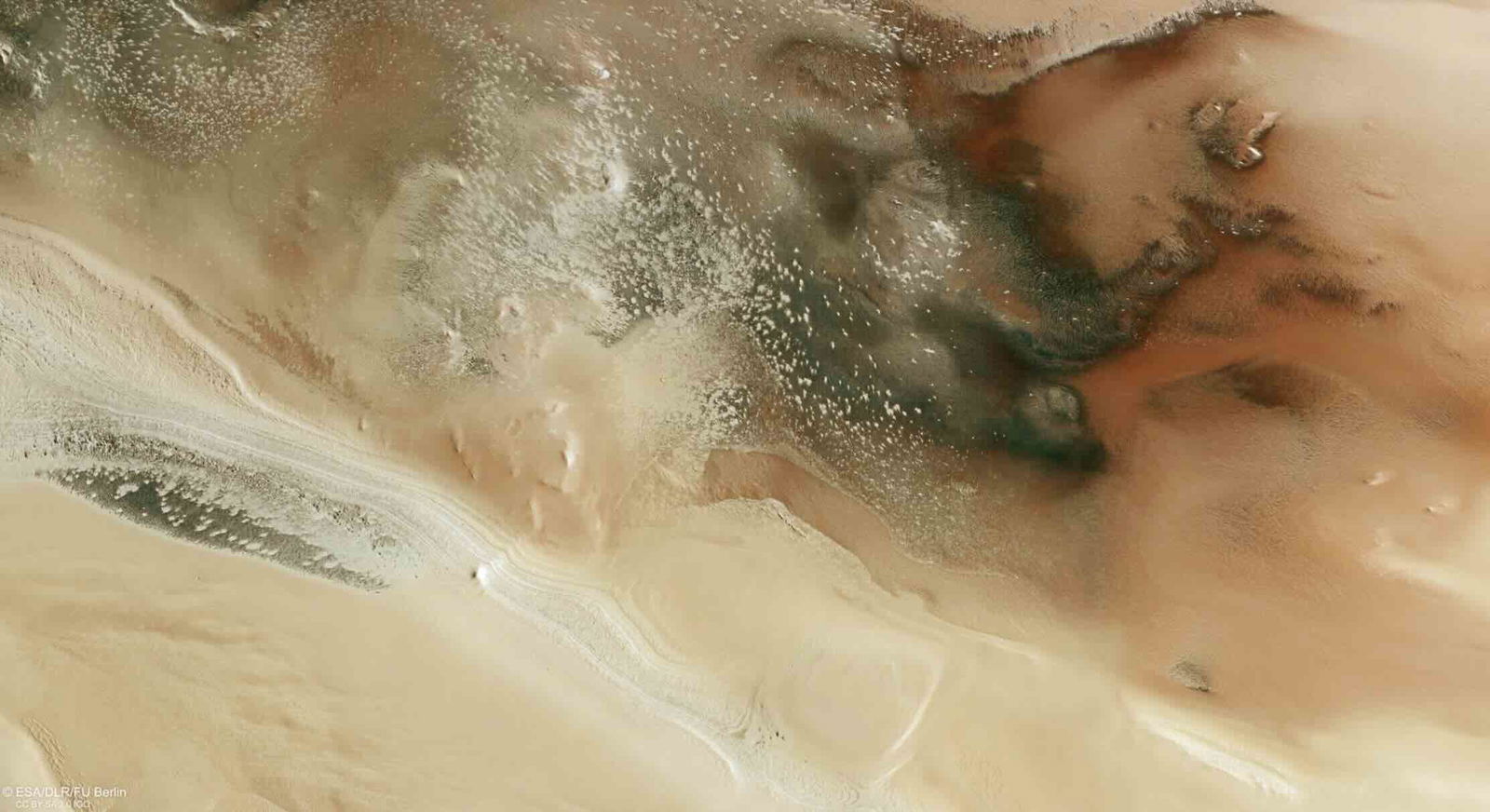Images captured by the European Space Agency’s (ESA) Mars Express have revealed unexpectedly dark “cryptic terrain” as the blanket of winter frost retreated on the Red Planet earlier this year.
Captured in images with the High-Resolution Stereo Camera (HRSC) onboard the ESA’s Mars Express in April 2024, the images showcase the unusual natural formations produced by the climactic effects of Martian winter.
Martian Polar Winter
An icy frost of frozen carbon dioxide and water blankets the south pole during the Martian winter. Instead of creating a soggy spring, the dry Martian climate causes the ice to sublimate directly from ice into vapor. During the warmer seasons, these gases float in the thin Martian atmosphere before condensing again as the air grows colder in late fall.
At a further distance from the Sun than the Earth, the Martian climate is significantly colder than ours. As a result, the southern ice cap stretches to a southern latitude roughly the equivalent to that of Scotland’s distance from Earth’s northern pole.
Imagery captured by the Mars Express shows layered deposits created by ice freezing with particles captured inside, which was left behind as the ice sublimated. The left side showcases stacked layers of these deposits, while a continuous smooth layer covers the right side.
Strange Features in the Martian Landscape
The dark regions in the image initially confused scientists, prompting them to dub the unusual features “cryptic terrain.” The surface in this region is a type of topography referred to as “periglacial,” formed by ice freezing and thawing. The Arctic and Antarctic regions of Earth are examples of periglacial landscapes. The process creates polygonal shapes in the ground, leading to a strange scale-like appearance from above.
Dark dust deposits fan out from large terrain features across tens or even hundreds of meters. This is the result of a strange coalescence of prevailing winds and the spring thaw. Solar rays pass through the ice, warming the ground beneath before the ice can fully melt. This creates a high-pressure gas pocket beneath, which will eventually crack the ice. When this gas erupts from under the ice, it carries the dust with it to be blown across the Martian surface, creating darks fans.
Seasonal Phenomena
Yet another phenomenon occurs in the spring, building from these deposits of dark dust. Since they erupted from underneath ice, they are likely to land in other areas that remain ice-covered. As darker colors absorb more sunlight, the dust heats up much faster than the ice it landed on, as the ice reflects sunlight. This leads to dust melting straight down through the ice and sinking to the underlying surface. Sometimes, this increases the sublimation rate, while in other instances it may lead to a fresh layer of ice forming over the holes created by the dust sinking, resulting in a new light-colored fan replacing the dark one.
Launched in June 2003, the Mars Express arrived in Mars orbit in December of that year. While the orbiter’s mission was successful, the attempt to place a lander on the Martian surface failed and was declared lost by February.
Discoveries have ranged from detecting ammonia and methane in the Martian atmosphere to helping resolve the presence of an alleged “face on Mars” in the Cydonia region as an optical illusion resulting from natural features. Presently, Mars Express continues its explorations of the Red Planet with its array of onboard instruments.
Ryan Whalen covers science and technology for The Debrief. He holds a BA in History and a Master of Library and Information Science with a certificate in Data Science. He can be contacted at ryan@thedebrief.org, and follow him on Twitter @mdntwvlf.

